Syracuse’s historic center on the island of Ortygia transports visitors back in time. Iconic landmarks like the Temple of Apollo and the Cathedral of Syracuse provide a glimpse into the city’s ancient Greek and Roman heritage. Across the harbor, the Neapolis Archaeological Park showcases even more remarkable ruins, from the well-preserved Church of San Nicolò to the impressive Roman Amphitheater. Whether exploring Ortygia’s charming plazas or immersing oneself in the Latomie del Paradiso cave’s exceptional acoustics, this guided tour promises to unveil the captivating cultural tapestry that has shaped Syracuse over the centuries.
Key Points
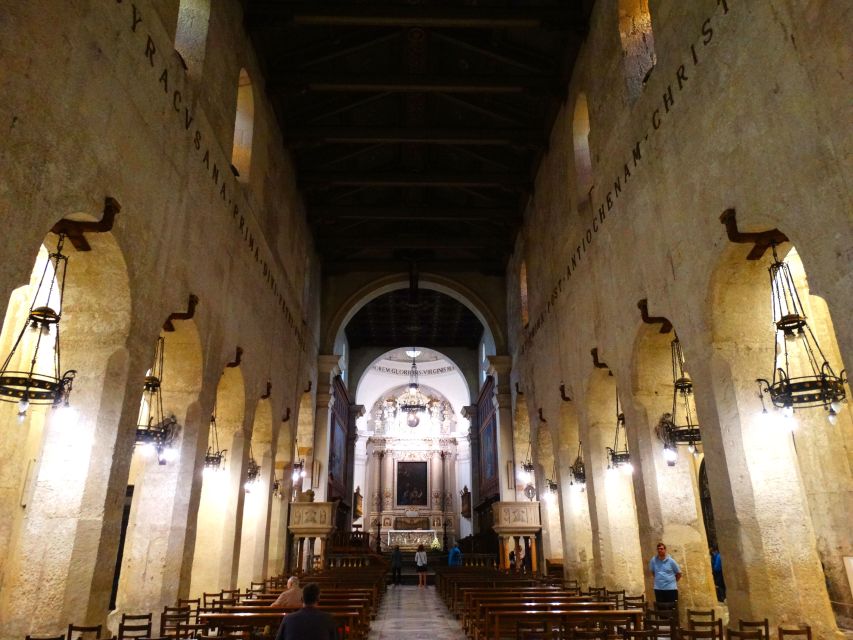
- Explore the historic center of Syracuse on the picturesque island of Ortygia, including the ancient Greek Temple of Apollo and the Cathedral of Syracuse.
- Visit the Neapolis Archaeological Park to discover well-preserved Greek and Roman landmarks like the Roman Amphitheater and the Altar of Hieron.
- Marvel at the remarkable acoustic properties of the Latomie del Paradiso cave, a unique limestone quarry with an exceptional sound quality.
- Learn about the blending of ancient Greek and Christian heritage as you discover the Church of San Nicolò ai Cordari.
- Enjoy panoramic views of the coastline from the Alfeo seafront and Maniace Castle, offering a comprehensive exploration of Syracuse’s historic center.
It's also worth checking out some other tours and experiences nearby.
Historic Center of Syracuse
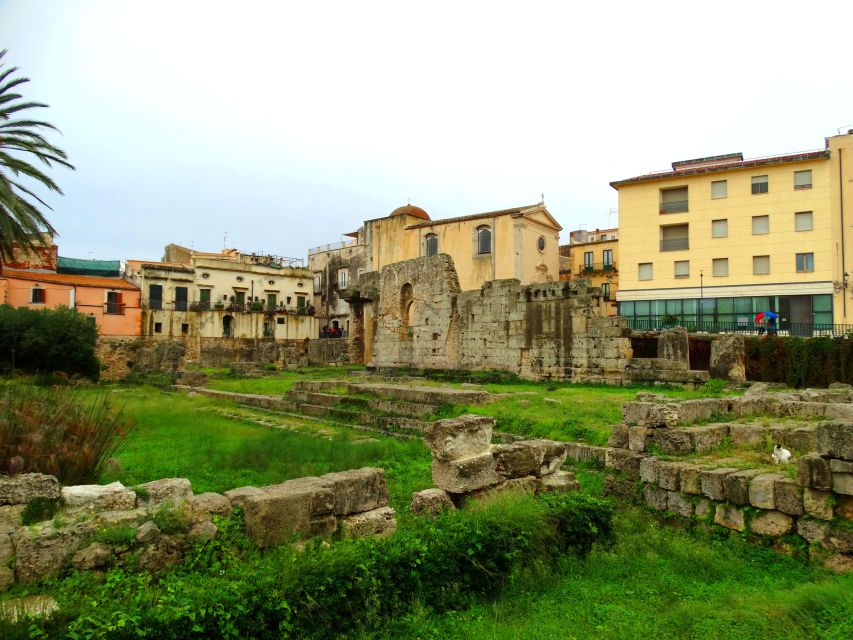
The historic center of Syracuse is situated on the picturesque island of Ortygia, where visitors can explore the remnants of the city’s ancient Greek and Roman past.
One of the highlights is the Temple of Apollo, dating back to 580 BC. Nearby, the Piazza Archimede features the impressive Diana Fountain, while the Piazza della Minerva is home to the Cathedral of Syracuse, built atop an ancient Temple of Athena.
The Fonte Aretusa, a freshwater spring, and the Alfeo seafront with Maniace Castle are other notable attractions. Guests will be enchanted by the blend of Baroque architecture and ancient ruins that define the historic heart of this fascinating Sicilian city.
Ortygia Island Highlights
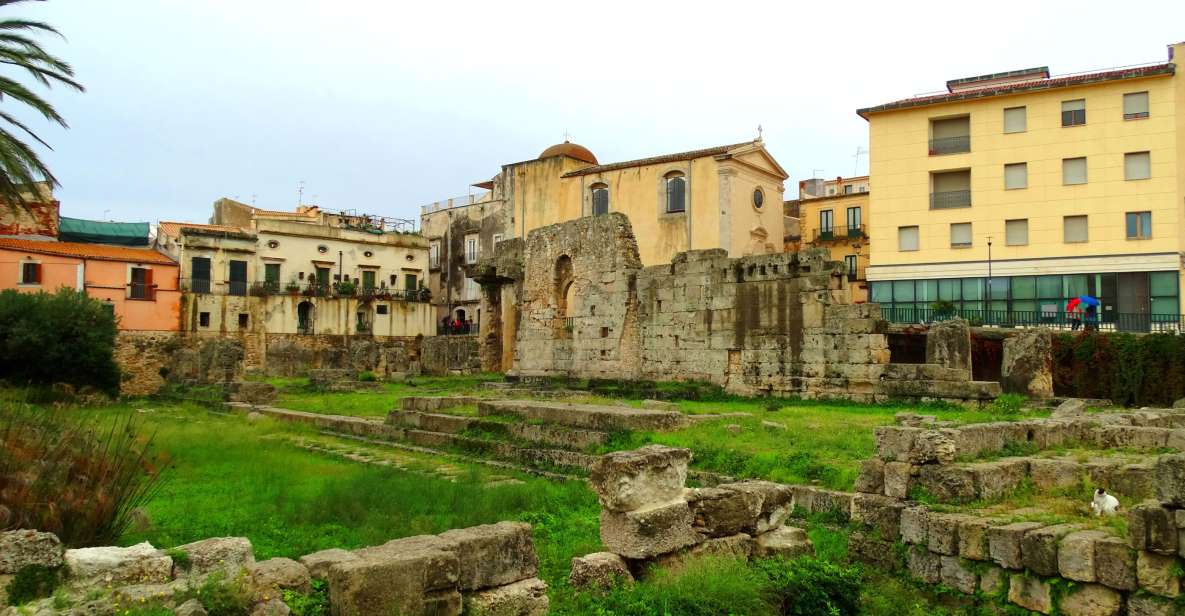
As visitors explore Ortygia Island, they’ll be captivated by the iconic Temple of Apollo, dating back to 580 BC and standing as a testament to the city’s ancient Greek heritage.
Nearby, the picturesque Piazza Archimede showcases the impressive Diana Fountain, while the Piazza della Minerva is home to the grand Cathedral of Syracuse, built upon the ruins of an ancient Temple of Athena.
The Fonte Aretusa, a freshwater spring, offers a tranquil respite, and the Alfeo seafront and Maniace Castle provide stunning views of the coastline.
This historic island offers a glimpse into Syracuse’s rich past, blending ancient Greek, Roman, and medieval influences.
Temple of Apollo
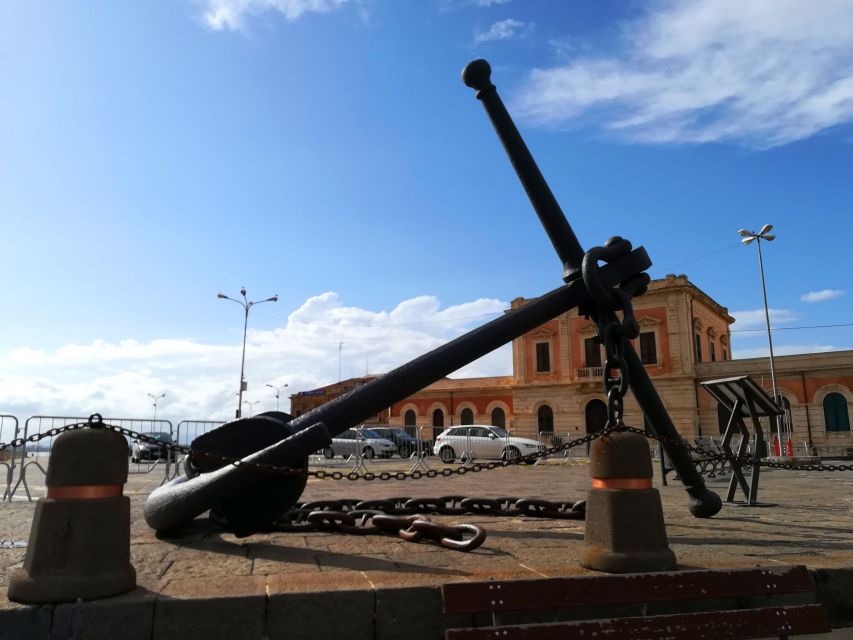
Perched atop the rocky headland, the Temple of Apollo stands as a captivating remnant of Syracuse’s ancient Greek heritage, dating back to an impressive 580 BC.
Once a magnificent structure, the temple’s ruins still evoke a sense of grandeur and serve as a testament to the city’s illustrious past. Visitors can wander through the remains, imagining the sacred rituals and ceremonies that took place here centuries ago.
The temple’s strategic location overlooking the harbor underscores its significance as a prominent landmark in the city’s skyline. Exploring the Temple of Apollo offers a glimpse into Syracuse’s deep-rooted connection to the ancient Greek world and the enduring legacy it has left behind.
Piazza Della Minerva
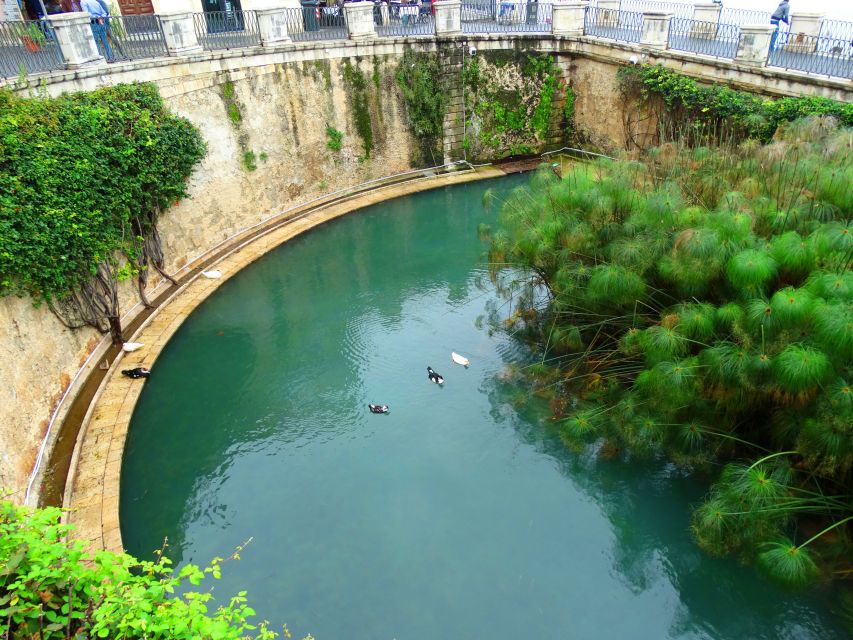
Piazza della Minerva stands as the picturesque heart of Syracuse’s historic center, dominated by the majestic Cathedral of Syracuse. Visitors can admire the striking Baroque façade of the cathedral, which incorporates remnants of the ancient Temple of Athena within its structure, blending the city’s Greek and Christian heritage.
The piazza also features:
- The Diana Fountain, a Baroque-style fountain adorned with mythological figures.
- The Palazzo Beneventano, an impressive Baroque palace.
- The Santuario di Minerva, a small chapel dedicated to the goddess Athena.
The piazza offers opportunities for leisurely strolls and people-watching in the lively square.
The piazza offers a captivating blend of architectural styles and historical significance, inviting visitors to enjoy Syracuse’s rich cultural tapestry.
Neapolis Archaeological Park
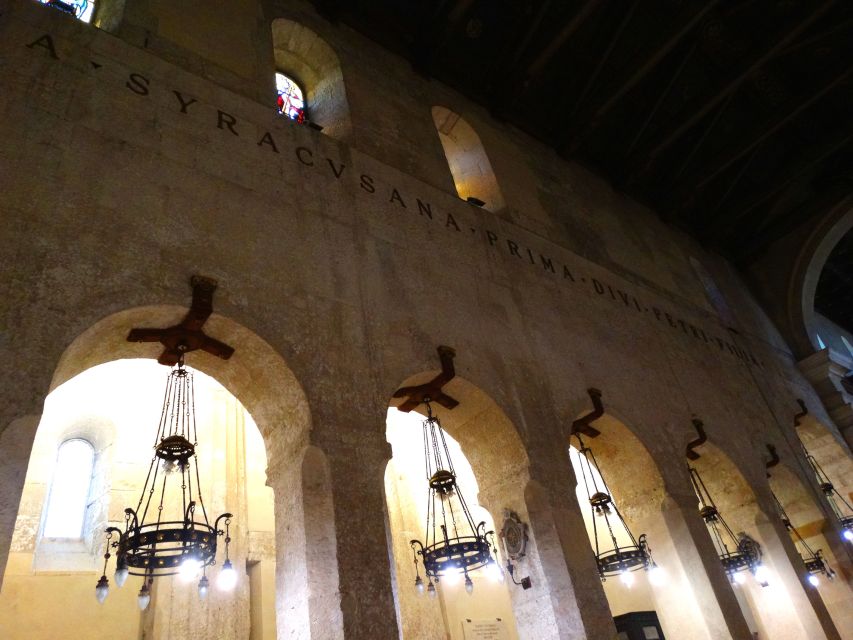
The Neapolis Archaeological Park showcases Syracuse’s rich Greek and Roman heritage, allowing visitors to explore an array of ancient ruins and monuments.
Within the expansive park, travelers can discover the well-preserved Church of San Nicolò ai Cordari, which stands as a testament to the city’s Christian influences.
Nearby, the impressive Roman Pool and Amphitheater from the Augustus era offer a glimpse into Syracuse’s glorious past.
Visitors can also marvel at the imposing Altar of Hieron and explore the captivating Latomie del Paradiso and Ear of Dionysus cave, known for its remarkable acoustic properties.
This archaeological gem provides an immersive experience, transporting guests back in time to uncover the city’s profound historical significance.
Church of San Nicolò
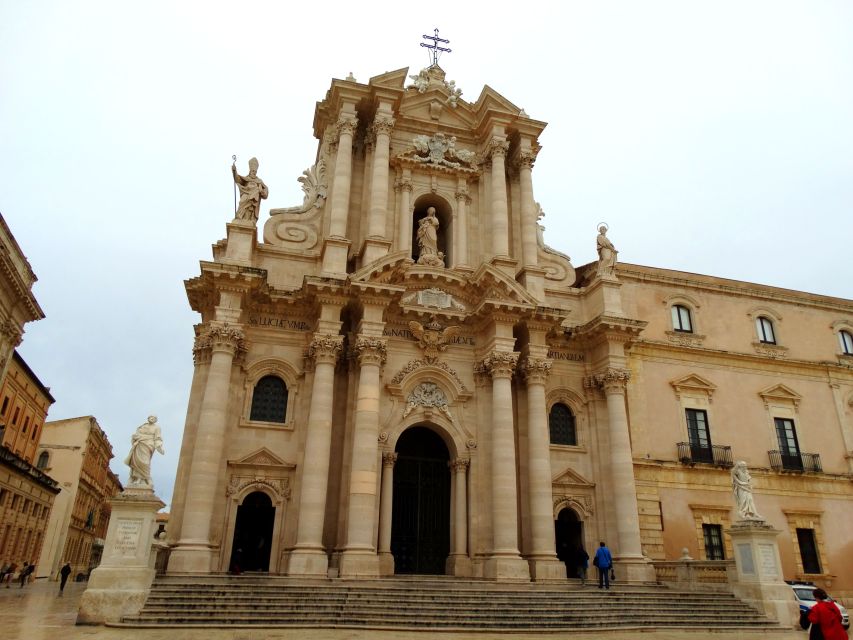
Situated within the Neapolis Archaeological Park, the Church of San Nicolò ai Cordari stands as a testament to Syracuse’s rich Christian heritage. This well-preserved edifice offers visitors a glimpse into the city’s diverse religious influences, blending architectural elements from both Greek and Roman traditions.
The church’s highlights include:
- Intricate carved stone portals with Corinthian columns.
- A mix of Byzantine and Norman-style architectural features.
- Preserved frescoes and mosaics adorning the interior walls.
- The church’s strategic location adjacent to the Roman Amphitheater.
Exploring this historic church provides a deeper understanding of Syracuse’s evolution from an ancient Greek polis to a thriving Christian center during the Roman era.
Roman Amphitheater and Altar
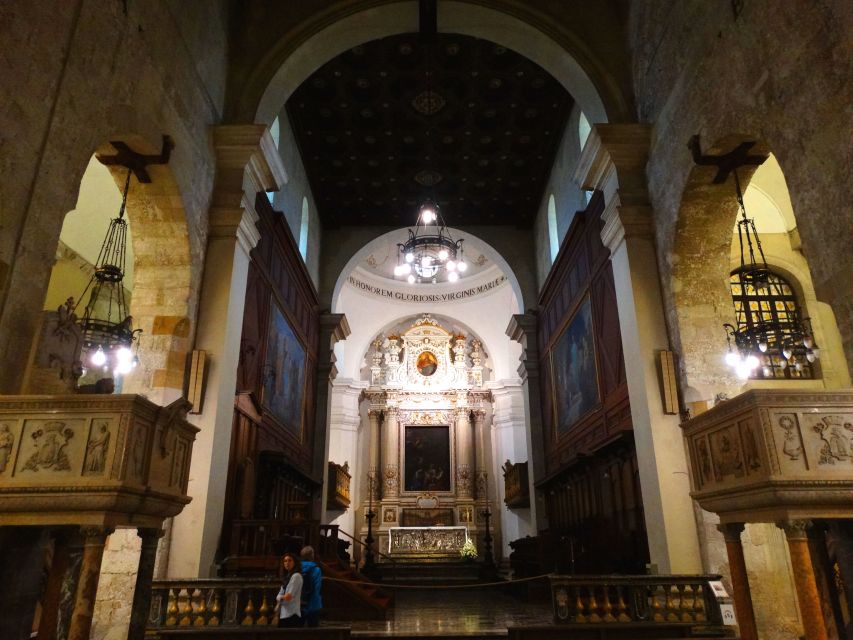
Towering over the Neapolis Archaeological Park, the Roman Amphitheater stands as a testament to Syracuse’s storied past. Constructed during the Augustan era, this grand structure hosted elaborate gladiatorial contests and theatrical performances that captivated audiences for centuries.
Nearby, the Altar of Hieron, a massive sacrificial platform, served as the centerpiece of religious ceremonies conducted by the ancient Greek city-state.
Visitors can marvel at the impressive scale and intricate architectural details of these archaeological wonders, which offer a glimpse into the rich cultural heritage of Syracuse. These ancient ruins provide a tangible connection to the city’s illustrious history, inviting travelers to enjoy the grandeur of its past.
Latomie Del Paradiso Cave
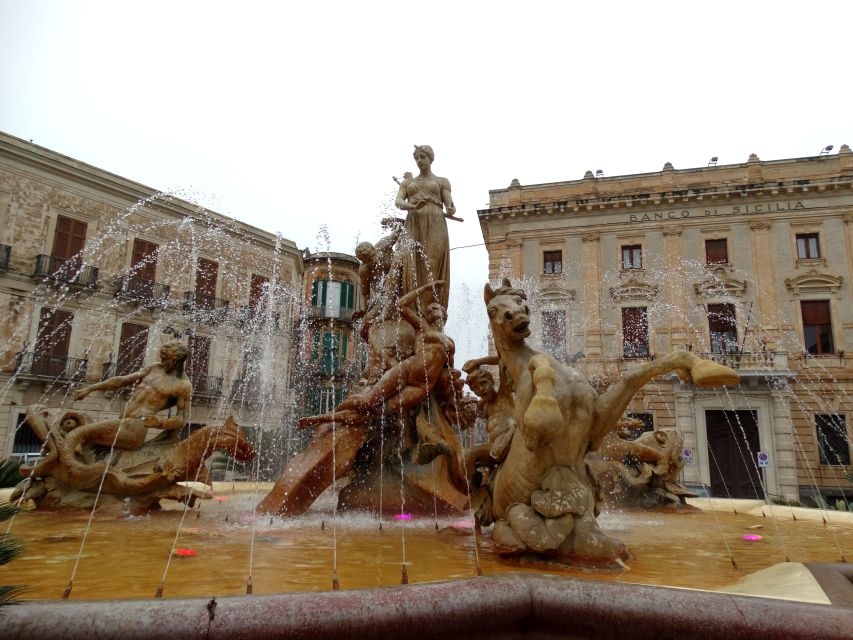
Nestled within the Neapolis Archaeological Park, the Latomie del Paradiso cave captivates visitors with its unique geological formations and remarkable acoustics.
This subterranean chamber, carved from limestone by ancient quarrymen, has long been renowned for its remarkable echo that has inspired various myths and legends about its origins.
Visitors can explore the cave and experience the astonishing acoustic properties that have led it to be known as the ‘Ear of Dionysus.’ The cave’s unique shape and size create an exceptional sound quality, allowing even the softest whispers to be clearly heard across the chamber.
This fascinating geological wonder is a must-see for anyone exploring the rich history and archaeological marvels of Syracuse.
Key features of the Latomie del Paradiso cave:
- Carved from limestone by ancient quarrymen
- Renowned for its remarkable echo and acoustic properties
- Inspiring myths and legends about its origins
- Offering a unique and captivating experience for visitors
Here's a few more nearby tours and experiences we think you'll like.
- Ortygia: Sailing Tour to Plemmirio With Aperitif
- Photographer in Syracuse
- Siracusa: Picnic Boat Tour of Pillirina,Ortigia & Sea Caves
- Syracuse: Ortygia & Neapolis Archaeological Park Guided Tour
- From Syracuse: Mount Etna Volcano & Zafferana Etnea Private Tour
- Siracusa: Ortigia & Sea Caves Speedboat Tour With Swim Stop
Frequently Asked Questions
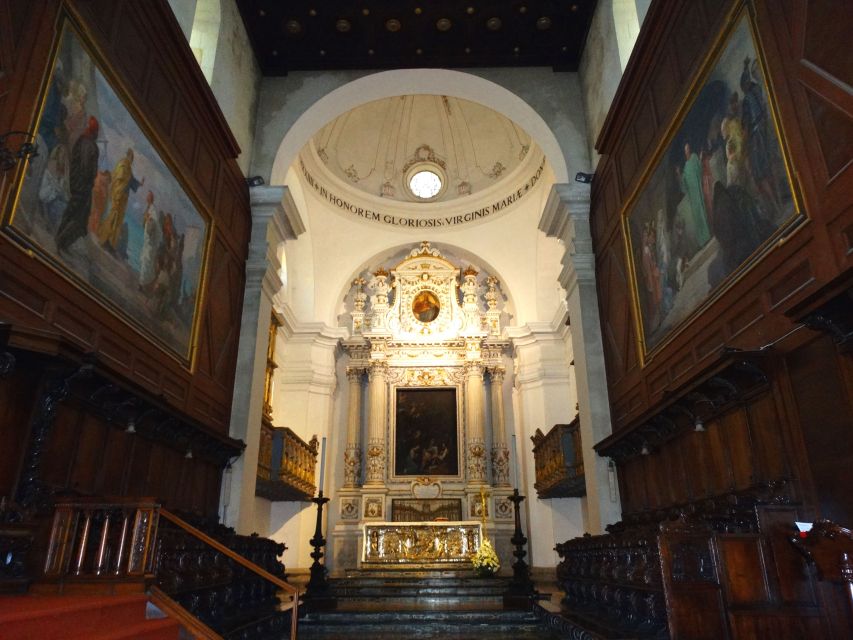
Can I Take Photos During the Tour?
Yes, visitors can take photos during the tour. Photography is generally permitted in the historic sites and archaeological park, allowing guests to capture the ancient ruins and Baroque architecture at their own leisure.
What Is the Tour Cancellation Policy?
The tour’s cancellation policy is flexible. Customers can cancel or change their booking up to 24 hours before the scheduled start time without incurring any fees. This allows for last-minute adjustments to accommodate changing plans or schedules.
Is the Tour Suitable for Children?
The tour is generally suitable for children, though some of the ancient ruins may be less engaging for younger kids. Parents should consider their children’s interests and ability to walk for 2 hours. Activities can be tailored to accommodate families.
Can I Bring My Own Food and Drinks?
Participants can bring their own food and drinks to enjoy during the tour. However, it’s best to avoid consuming anything that could disturb the group or distract from the guide’s commentary. The tour provider may have recommendations on appropriate snack breaks.
Is the Tour Wheelchair Accessible?
The tour is wheelchair accessible, with accommodations for navigating the historic sites and archaeological park. Visitors should inform the tour guide in advance of any accessibility needs to ensure a comfortable experience.
Not for you? Here's more of our most recent tour reviews happening neaby
- Sailing Ride Along the Syracuse Coastline
- Syracuse: Private Boat Tour of Ortigia and Sea Caves
- Syracuse: Market and Private Cooking Demo at a Locals Home
- 3 Hours in Syracuse Boat Tour and Tuk Tuk Tour
- Siracusa Harley Davidson Rental
- Syracuse: PRIVATE Boat Excursion 2.5h
- Syracuse: Market, Cooking Class & Meal at a Locals Home
- Syracuse: PRIVATE Boat Excursion at Sunset 2.5h
- Breakfast on the Boat and Morning Snorkeling in Syracuse
- Syracuse: Boat Tour to Ortigia With Snorkeling
- Siracusa: Private Tour
- 3H Private Boat Tour of Syracuse and Ortigia With Skipper
- Syracuse: Ortigia First Discovery Walk and Reading Tour
- Tecnoparco Archimede Museum Exhibition Ticket
- Syracuse: Bus Transfer To/From Palermo Bus Station
Recap
Syracuse’s historic center on Ortygia Island and the Neapolis Archaeological Park offer a captivating exploration of the city’s ancient Greek and Roman past.
Visitors can enjoy the iconic Temple of Apollo, the grand Cathedral, the well-preserved Church of San Nicolò, and the impressive Roman Amphitheater, uncovering the rich cultural heritage that has shaped Syracuse over centuries.
